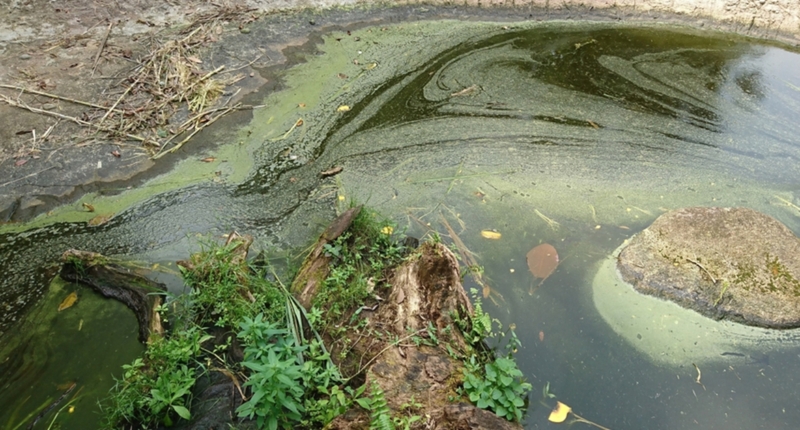Nitrate pollution is a serious issue affecting the global ecosystem, with potential negative impacts on air, water, soil, and marine and coastal areas. Reactive nitrogen, such as nitrate, can have serious consequences for water quality and human health. Current testing methods for identifying nitrate pollution sources are limited, but the stable isotope analysis is commonly used. The new one-step conversion process using titanium (III) chloride has made nitrate analysis more accessible, paving the way for national environmental monitoring schemes for nitrates. Governments can use these schemes to proactively address potential nitrate contamination sources. By using analytical tools and methods like this, it’s possible to improve global understanding of nitrogen pollution trends and find effective long-term solutions to the problem.
How better monitoring can aid the fight against nitrate pollution.
The urgent need to address pollution caused by human activities is a top priority for environmental scientists and researchers worldwide. Nitrate pollution, particularly from reactive nitrogen, is a significant contributor to this issue, posing severe threats to water quality, human health, and greenhouse gas emissions.
Despite its potential to cause damage, nitrate pollution has received less attention in the media compared to carbon, which is often discussed due to its impact on climate change. This disparity has limited global efforts to tackle nitrate pollution, which is a serious issue, particularly for agriculture.
Currently, monitoring nitrate pollution is costly and complex, making it challenging to address. However, with the development of new testing and analysis methods, it is possible to determine how nitrate pollution is impacting our environment, helping to find solutions for the future.
Nitrate pollution: A deepening global problem
Maintaining the balance of the global nitrogen cycle is critical to the health of the planet’s ecological processes. The nitrogen cycle is dependent on a specific balance of nitrogen inputs and outputs, including environmental nitrate levels.
While nitrate is a vital nutrient for all plants and animals, the overuse of artificial fertilizers and excessive burning of fossil fuels has disrupted the balance of the nitrogen cycle, increasing nitrate production to dangerous levels.
According to data from the UN Environment Programme, human activities produce around 120 million tonnes of reactive nitrogen annually, with almost two-thirds of this amount considered pollution. Nitrate pollution can manifest in various ways, including:
-
Groundwater contamination
-
Eutrophication of rivers and lakes
-
Release of greenhouse gases
-
Threats to human health
To address this issue, there is a pressing need for better monitoring and analysis methods to highlight how nitrate pollution impacts our environment. Improved testing will help researchers develop more effective solutions to combat nitrate pollution, contributing to the restoration of a balanced nitrogen cycle.
In conclusion, by focusing on nitrate pollution and developing innovative monitoring and analysis methods, we can work towards creating a healthier environment for ourselves and future generations.
How Nitrate Pollution Impacts Air, Water, and Soil
Nitrate pollution is a growing concern for environmental scientists and researchers, as it poses a significant threat to air, water, and soil quality. Nitrate pollution can be caused by three main sources:
-
Nitrate leaching from sewer faults and animal waste created by livestock farming
-
Nitrate runoff from fertilizers that enters surface waters
-
Nitrous oxide (N2O) emissions, a potent greenhouse gas, generated by human activity, including agriculture, the burning of fossil fuels, and other industrial processes
Nitrate leaching, for example, can poison aquifers and drinking wells, leading to cancer and foetal development problems during pregnancy if consumed. Excess nitrate runoff can cause toxic algal blooms, eutrophication, and ultimately, hypoxia and marine dead zones in coastal areas and at sea. Additionally, nitrate pollution leads to an increase in N2O emissions, a potent greenhouse gas with around 300 times more warming potential than CO2.
Recent reports show that these trends are accelerating, necessitating new solutions to bring nitrate pollution under control. To do so, stakeholders need clarity about the exact sources of nitrates and whether they are generated from anthropogenic sources.
Addressing Nitrate Pollution
Several interventions can mitigate nitrate pollution from different sources, many of which are already widely used by relevant industries. These include:
-
Using nitrogen fertilizers during specific time periods, keeping them away from steep slopes and watercourses to prevent leaching and runoff
-
Rotating crops, using soil winter cover and catch crops to prevent leaching and runoff during wet seasons
-
Limiting the total amount of livestock manure applied to land
-
Adding nitrification inhibitors to fertilizers
-
Using drip fertigation to distribute fertilizer more evenly and reduce its overall volume
However, effectively deploying these interventions requires clarity about the sources of nitrates, as they are naturally occurring compounds, and detecting pollution requires more work than merely measuring nitrate concentrations.
Because the nitrogen cycle is complex, a strong foundation of research and analysis is needed to understand the sources of nitrate pollution and apply the appropriate interventions. With the development of new testing and analysis methods, we can better understand how nitrate pollution affects our environment, work towards mitigating it, and restore a balanced nitrogen cycle.
How New Testing Methods Can Aid the Fight Against Nitrate Pollution
To develop effective strategies to reduce nitrate pollution, researchers need to identify the sources of environmental nitrate and distinguish between those generated through natural processes and those created by human activity. Traditional testing methods have limitations, but newer innovations are helping to overcome these barriers.
Limitations of Conventional Testing Methods
Stable isotope analysis is the most commonly used technique to identify different sources of nitrate, working by measuring the different isotopes of each sample to gain insights into their specific origins. The accessibility of this method, however, has traditionally been limited by difficulties associated with the sample preparation process, which requires dissolved nitrate samples to be converted to N2O first. Typically, this would be done using special denitrifying bacteria or through a chemical conversion using cadmium and sodium azide.
The bacterial method is complicated due to the difficulty, costs, and time involved in cultivating the bacteria under delicate conditions, limiting its widespread use. The cadmium-azide approach has its drawbacks, as cadmium and sodium azide are highly toxic, requiring specific lab licenses, safety protocols, and disposal procedures.
Innovative New Testing Methods
To address these limitations, researchers developed an innovative new one-step conversion process that uses titanium (III) chloride to prepare samples for nitrate analysis in a much simpler way. The method avoids the need to use hazardous reagents or maintain bacterial cultures, with a sample preparation process that takes only a few minutes and produces fully prepared samples in under 24 hours.
This new testing method can be carried out using basic laboratory equipment, utilizing safe, easy-to-dispose-of, and readily available reagents, making it much more cost-effective for labs to use. With more accessible testing, researchers can identify the sources of nitrate pollution more accurately and develop effective strategies to reduce or eliminate them.
The Need for Comprehensive Testing and Analysis
Comprehensive testing and analysis are essential in creating an effective strategy to combat nitrate pollution. With newer, more accessible testing methods, researchers can better understand how nitrate pollution impacts our environment and work towards mitigating its effects. By identifying the sources of nitrate pollution and developing effective strategies to combat them, we can work towards restoring a balanced nitrogen cycle and creating a healthier environment for ourselves and future generations.
The new one-step conversion process using titanium (III) chloride has made it easier and more cost-effective for laboratories to test for nitrate pollution. This method has already been successfully adopted by smaller laboratories in developing nations with fewer resources. It may also pave the way for national environmental monitoring schemes for nitrates, enabling governments to proactively address potential sources of nitrate contamination. As more analytical tools and methods are developed, there is hope for improved global understanding of nitrogen pollution trends and the development of effective long-term solutions to address this pressing environmental issue.
Don’t miss interesting posts on Famousbio









